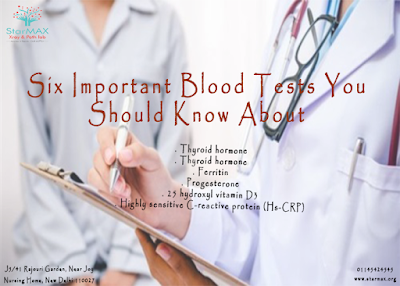Radiology signifies a branch of medicine that manages luminous energy in the identification and treatment of ailments. This area can be split into two broad areas -- diagnostic radiology and interventional radiology. A doctor that specializes in radiology is known as a radiologist. Radiology is a branch of medicine which uses imaging technology to diagnose and cure disease. Radiology might be broken into two distinct locations, diagnostic radiology, and interventional radiology. Physicians who specialize in radiology are known as radiologists. Using medical imaging to recognize and cure disease and illness through early detection has emerged as one of modern medicine's strongest developments and is recognized for its economic donation to health care.
Radiology Procedures
1. X-Ray
An x-ray (radiograph) is a noninvasive medical evaluation which helps doctors diagnose and treat clinical problems. Imaging with x-rays entails exposing a region of the human body to a small dose of ionizing radiation to create pictures of the interior of the human body. X-rays are the earliest and most frequently used form of medical imaging.
a. Arthrography
b. IVP
c. Myelography
d. X-ray – Bone
e. X-ray - Chest
2. CT Scan
CT scan - occasionally referred to as CAT scanning - is a noninvasive clinical evaluation which helps doctors diagnose and treat clinical problems. CT scanning unites special x-ray equipment with complex computers to make many pictures or images of the interior of the human body. These cross-sectional pictures of this area being analyzed can subsequently be analyzed on a computer screen or printed. CT scans of inner organs, bone, soft tissue and blood vessels supply greater clarity and show more information than regular x-ray tests.
a. CT-Abdomen and Pelvis
b. CT- Angiography
c. CT- Body
d. CT- Chest
e. CT- Head
f. CT- SinusesCT- Spine
3. Ultrasound
Ultrasound imaging, also called ultrasound scanning or sonography, entails exposing a part of their human body to high-frequency sound waves to create pictures of the interior of the human body. Ultrasound tests don't use ionizing radiation (as used in x-rays). Because ultrasound images are recorded in real time, they could demonstrate the arrangement and motion of the human body's internal organs, in addition to blood flowing through blood vessels.
a. US – Abdomen
b. US – Breast
c. US – Carotid
d. US – General
e. US – Pelvis
f. US – Vascular
g. US – Carotid
h. US – Scrotum
i. US – Thyroid
j. US – Vascular
k. US - Venous
4. Mammography
A mammography examination, known as a mammogram, is utilized to help in the early detection and diagnosis of breast disorders in women.
More Information
MRI
Magnetic resonance imaging (MRI) is a noninvasive clinical evaluation which helps doctors diagnose and treat clinical problems. MR imaging uses a strong magnetic field, radio frequency rhythms and a computer to make detailed images of organs, soft tissues, bone and nearly all other internal structures. The pictures can then be analyzed on a computer screen, printed or copied to the CD. MRI doesn't use ionizing radiation (x-rays). Thorough MR images make it possible for doctors to better assess a variety of areas of the human body and particular diseases which might not be assessed satisfactorily with other imaging techniques like x-ray, ultrasound or computed tomography (also called CT or CAT scanning).
a. MR- Angiography
b. MRCP
c. MRI – Brain
d. MRI – Breast
e. MRI- Chest
f. MRI – Head
g. MRI – Musculoskeletal
h. MRI - Spine
5. Specialty Procedures
Angiography is the radiographic analysis of these blood vessels. An angiogram uses a radiopaque substance, or contrast medium, to create the blood vessels visible beneath x. Angiography can be used to detect abnormalities such as narrowing or blockages in the blood vessels through the circulatory system and in certain organs. The process is often utilized to determine atherosclerosis, to diagnose cardiovascular disease, to assess kidney function, to map renal anatomy in transplant donors, to discover an aneurysm, tumor, blood clot, and to diagnose problems with the retina of the eye. Additionally, it is utilized to provide surgeons with an accurate vascular map of the center before the open-heart operation or of the mind before neurosurgery. A venogram uses a radiopaque material, or contrast medium, to create the veins visible beneath x. Venography is the most accurate test for detecting deep vein thrombosis, which may result in pulmonary embolism, a potentially deadly illness.
Vascular Intervention
a. Transhepatic Cholangiogram with drainage or setting
b. Gastrostomy tubes
c. Gastrostomy into jejunostomy conversions
d. Nephrostomy tubes
e. Kyphoplasty/ Vertebroplasty
f. Trans jugular liver biopsies
g. Paracentesis
h. Thoracentesis
i. Abscess Drainages
Non- Vascular Intervention
a. Transhepatic Cholangiogram with drainage and/or stenting
b. Gastrostomy tubes
c. Gastrostomy to jejunostomy conversions
d. Nephrostomy tubes
e. Ureteral stent placement and ureteral PTA
f. Tunneled pleural and peritoneal drains
g. Kyphoplasty/ Vertebroplasty
h. Transjugular liver biopsies






